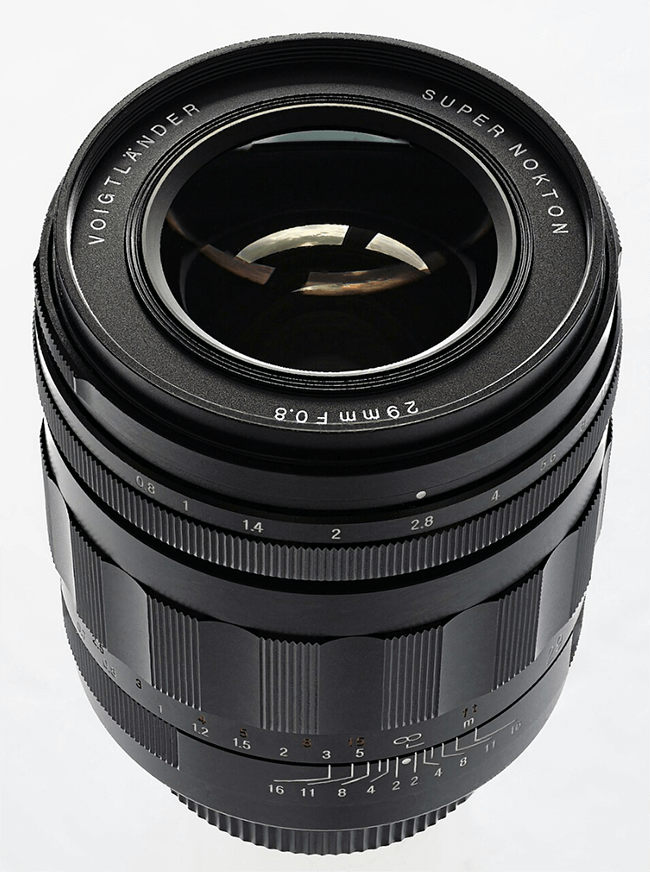What is a fast lens?
Shooting with a large aperture and appropriate shutter speed can effectively highlight the subject. But what exactly do "fast" and "slow" mean when referring to camera lenses?
Some photographers may confuse lens speed with autofocus speed or shutter speed. In fact, lens speed has nothing to do with speed concepts related to movement. Lens speed refers to the amount of light that passes through the lens when the shutter is open. This is controlled by the size of the lens aperture. The faster the lens, the larger its maximum aperture diameter, allowing more light to reach the sensor at the same shutter speed.
Lens speed refers to the maximum aperture diameter of a camera lens, or its smallest f-number. A lens with a larger maximum aperture than average (i.e., a smaller minimum f-number) is called a "fast lens" because it can achieve the same exposure with a faster shutter speed than an average lens. Conversely, a smaller maximum aperture (larger minimum f-number) is "slow" because it transmits less light intensity, requiring a slower (longer) shutter speed.
How does the f-number relate to lens speed?
The speed of a lens is usually indicated by its maximum aperture size. This diameter is expressed as an f-number, such as f/2.8 or f/5.6. Note that the smaller the f-number, the larger the aperture opening, and the more light passes through when the shutter is open. A high f-number refers to a small aperture. Modern digital cameras allow a wider range of aperture choices between the minimum and maximum apertures determined by the lens. In traditional film cameras, there were fewer preset apertures to choose from. The standard choices were aperture values that halved or doubled the amount of light received by the sensor, known as "f-stops." These are shown in the figure below. Therefore, going from f/4 to f/5.6 (or "stopping down one stop") means using only half the light when exposing the image. To achieve the same exposure with an aperture of f/5.6, a slower shutter speed is needed compared to f/4 to allow the same amount of light to enter. So an f/4 lens is "faster" than an f/5.6 lens.

What is the relationship between f-number and depth of field?
A smaller aperture (larger f-number) produces a greater depth of field, which is useful when you want sharpness from front to back, such as in landscape photography. A wider aperture, with the lowest f-number, results in the shallowest depth of field, which can be used for creative effects.
Are "fast" lenses better?
There are two main advantages to using a fast lens. Due to the shallow depth of field, photographers can isolate the subject. This idea, especially for portraits, is to make the subject stand out as clearly as possible against a blurred background. This gives an impression of spatial depth and draws the viewer's attention to the key parts of the image.
Fast lenses also facilitate available light photography. This type of photography involves creating images using the light you have.
Fast lenses allow for more exposure options in low light to achieve excellent results with a very shallow depth of field.
Lenses with a maximum aperture of f/4 or smaller (for example, f/2.8, f/1.8, f/1.4) are generally considered "fast lenses" in photography. These lenses allow more light to pass through, enabling faster shutter speeds and a shallower depth of field, which is desirable in low-light situations or to produce a blurred background effect. However, what is considered "fast" also depends on the camera's focal length and sensor size.
Theoretically, the minimum aperture value is 0 (or a numerical aperture of 1), corresponding to a lens with an infinite entrance pupil diameter. In practice, this value cannot be achieved due to mechanical limitations of the camera system (shutter clearance, mount diameter). Even for systems that can be designed without significant restrictions on lens size and image plane distance (such as microscopes and lithography systems), the cost of exceeding a numerical aperture of 0.95 (f/0.164) is usually prohibitive.

Cosina Voigtländer Super Nokton 29 mm / 0.8
In SLR camera systems, the typical mount diameter ranges from 44-54 mm, with a flange distance of approximately 45 mm. This limits the maximum possible aperture value to f/1.0 to f/1.2, with relatively strong vignetting at the image edges. Rangefinders and mirrorless cameras have significantly smaller flange distances (even less than 20 mm), which theoretically allows for lens designs of f/0.7 or even faster. In practice, the possibility of seeing such ultra-fast lenses designed for 35 mm ("full-frame") cameras, whether digital or film, is very small because their cost and weight may not be competitive with equivalent imaging solutions using larger sensors.
Characteristics of fast lenses:
Aperture and light intake: Smaller F-numbers (e.g., f/1.4, f/2) indicate a larger aperture, allowing more light to reach the camera sensor.
Low-light performance: Fast lenses perform excellently in low-light conditions, enabling you to capture images without increasing ISO sensitivity or excessively reducing the shutter speed.
Shallow depth of field: They can create a background blur effect, with the subject in focus and the background blurred, which is often used in portraits and for creative effects.
Focal length and format: The definition of "fast" can vary. For example, for telephoto lenses (e.g., 300mm and above), an f/4 lens may be considered fast, but it may not be for wide-angle lenses. Similarly, for smaller sensor cameras, even an f/4 lens may be considered fast.
Reference: Wikipedia
https://en.wikipedia.org/wiki/Lens_speed#References
Related Tags: Experience in using cameras
